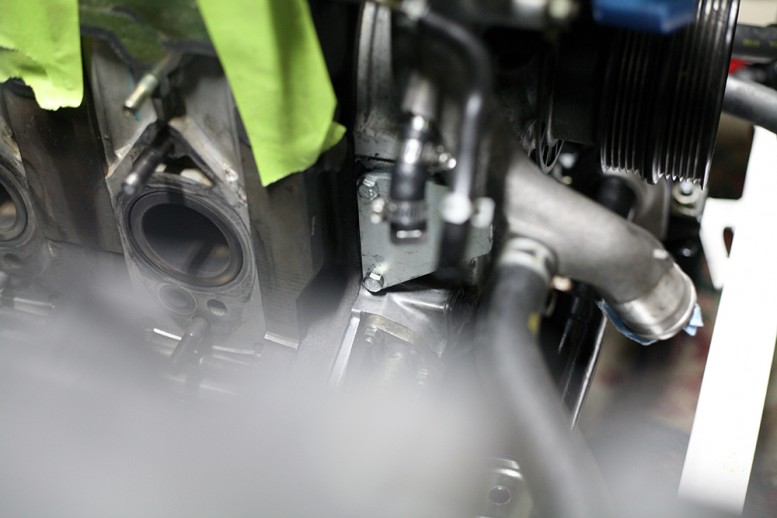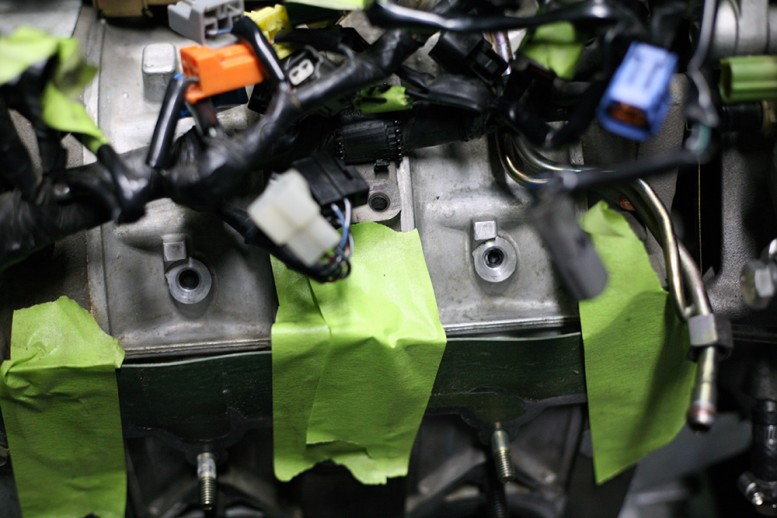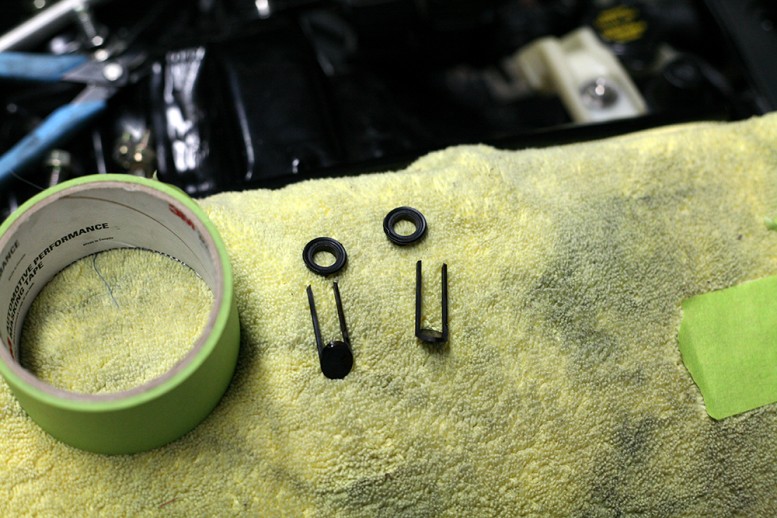I initially was not planning on blocking off the oil metering pump, but after further thought, I proceeded in doing so. A fair amount of debating was required to surmise the benefits of the OMP’s removal. I approached the decision process logically, I wasn’t trying to continue my spree of simplification in the name of reduced weight, or anything vain like that (although on that note, the OMP is actually a couple of pounds, and heavier than the other small components I’ve removed).
Since I’m moving to the PowerFC standalone, the ECU will not care either way if the OMP is plugged in or not. On the flipside, this means that should the pump ever fail, I won’t know about it because an error code will not be thrown. I felt that this was rather risky given the importance of lubrication in a rotary engine.
Furthermore, and more fundamentally, Mazda included the function of the OMP as a band-aid, so-to-speak. The purpose of the pump, as its name suggests, is to meter in a small amount of oil near where the primary fuel injectors are. This is not a preferred solution, because the OMP’s injectors are only able to lubricate one portion of the rotor. The second fault is that the OMP has to draw its source directly from the oil pan. Engine oil is not meant for this kind of lubrication, it does not burn clean and leaves deposits.
The best method is to premix, into the gas tank, with TCW-3 rated 2-stroke oil. This provides complete coverage and utilizes oil meant for the task. Of course, there’s no way Mazda’s corporate could sell the idea of asking owners to calculate and measure how much oil is needed for premixing during fill-ups – hence the implementation of the OMP.
I don’t mind the extra step of premixing without the OMP. Plus, it’s recommended to premix anyway, even with the OMP, albeit with a smaller ratio.
With that said, here is the OMP blocked off and its 2 injector ports plugged.
The actual OMP, note the plastic lines…
I also decided to muster up the courage to remove the fuel injector’s o-rings and diffusers. I had premonitions about this part, because the plastic diffusers are brittle and located in a very precarious location. I was able to remove the secondary injector’s o-rings and diffusers without much trouble. Then I moved to the primary injectors on the engine. I had to make a hook to use here. A small tug and the top portion of the diffusers came out, but ONLY the top portion. The bottom halves snapped cleanly off. Lo and behold, the outcome I was dreading and took extra precautions against still happened.
This was without a doubt a major ass-puckering moment. I quickly decided to take off the lower intake manifold, and was luckily able to get them out easily through the side port. Thank God. I thought they were stuck in the depths of the engine for good, this would have been game over.
Here you can see what I’m talking about…
LIM removed, I’m going to take this opportunity to order a new gasket and hardware for reinstall.
Why Mazda used PLASTIC for something hanging in the middle of the engine, in such a crucial location, I will never understand. I’ve read about people taking out their diffusers only to find portions of them deteriorated and missing. This means their engines ATE those pieces. And of course, engines have been lost this way as well.
I will NOT be putting these plastic ticking time bombs back in. I’m going with new injectors anyway, which are new technology and have better atomization, so the diffusers are not necessary.





